Ryoan-jiRock Garden
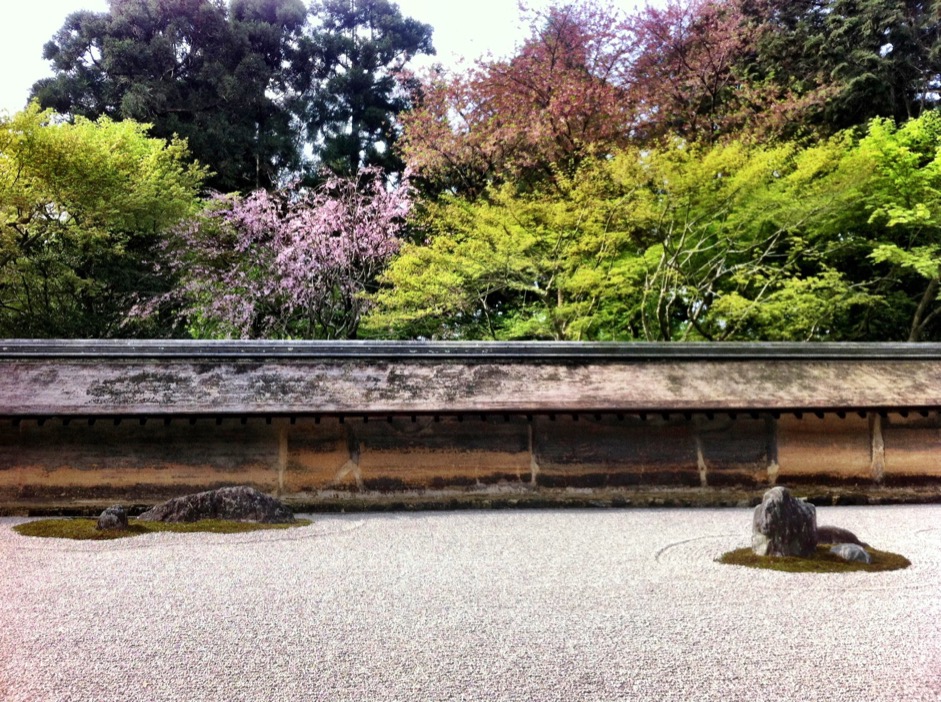
Loading...
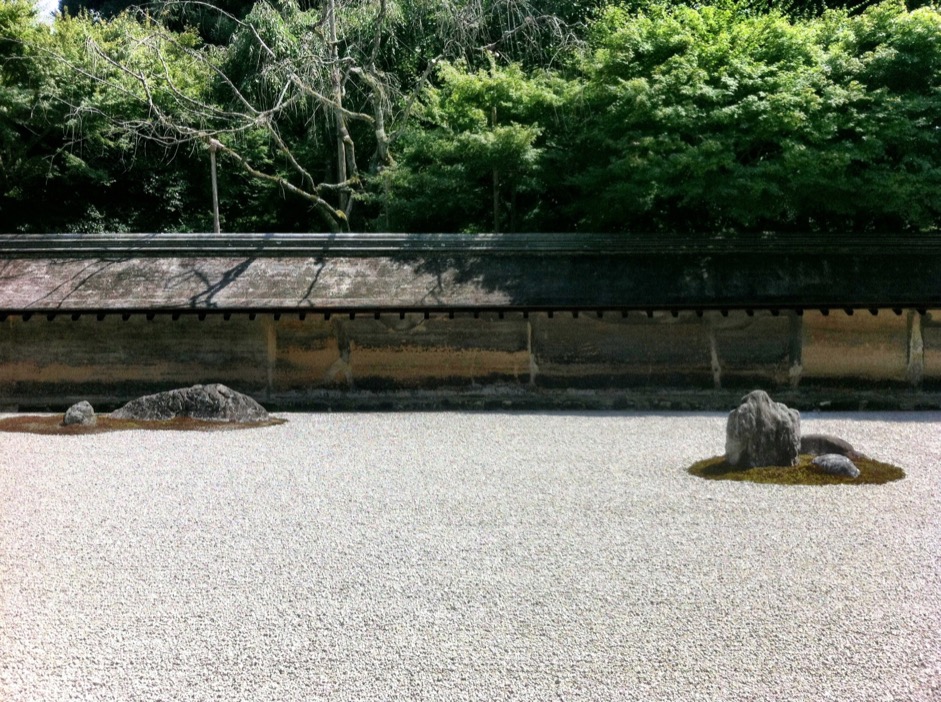
Loading...
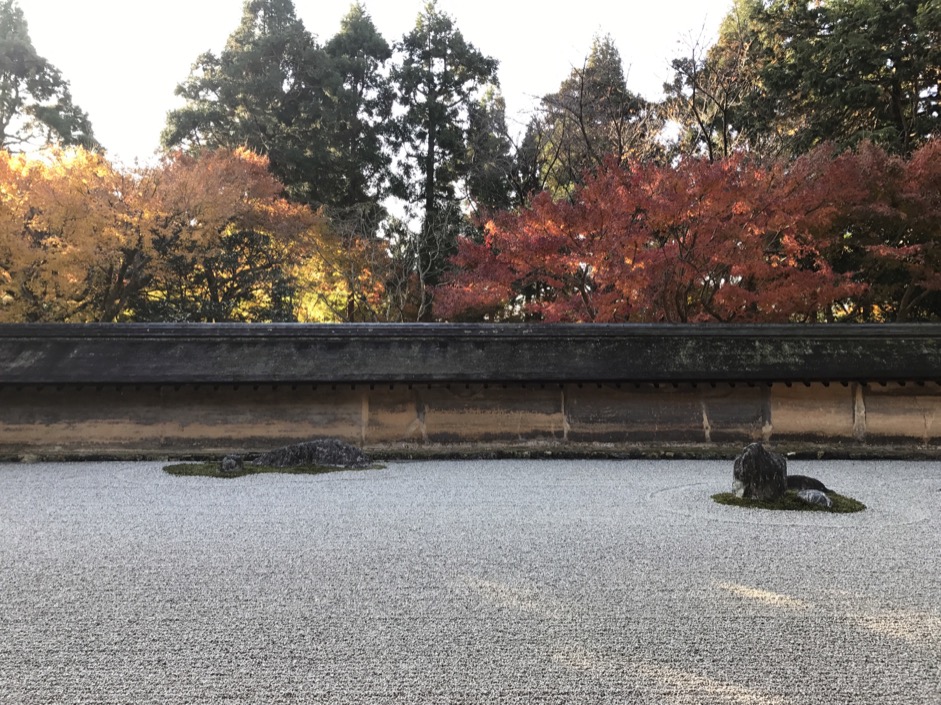
Loading...
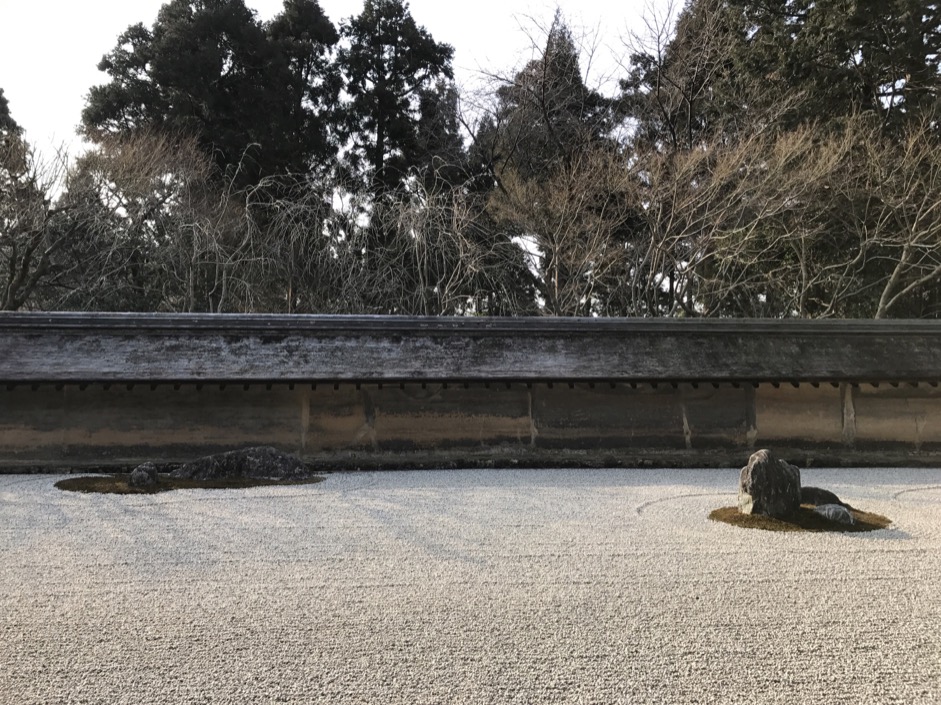
Loading...
Introduction
Pick any travel guide for Kyoto. I’m sure you’ll find Ryoan-ji, a Zen Buddhist temple famous for its Rock Garden (pictured above).
This zen garden is made of fifteen rocks, surrounded by patches of moss, laid out in the ocean of gravels on a walled rectangular plot.
And that’s it…
If you have been to this garden, you must have been utterly puzzled during your visit. Too abstract and too minimal. I also scratched my head during my first visit to the garden. My second visit a year later didn’t help me figure out anything, either.
During the third visit, however, the whole garden started to make sense to me. It taught me how to live a happy life, with the layout of the fifteen rocks as the “textbook”.
Get the Viewpoint Right
The key to understand this cryptic garden is to see it from where you’re supposed to: halfway between the left and right edges of this rectangular garden, indicated with the gray arrow in the floor plan below:
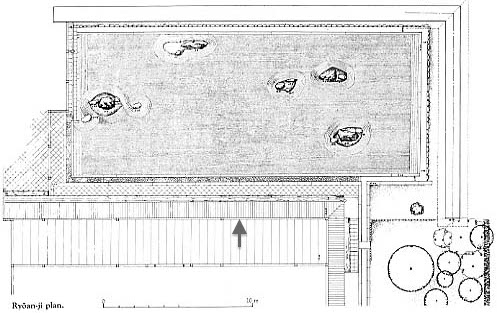
Loading...
My third visit to the garden was different from the previous ones in that I had this piece of knowledge, learned from a book on Japanese gardens (Tanaka 2002, pp. 58-59). The book says that the whole garden was constructed to be seen from this viewpoint.
No Focal Point in the Garden
Once I sit down and see the garden from the correct viewpoint, the layout of fifteen rocks starts taking on its meaning: there is nothing emphasized in this garden.
Straight ahead

Loading...
There is no stone at the center of gaze when I look straight ahead. The landscape composition is split between two groups of rocks on the right and on the left. Nothing is really emphasized.
Leftward
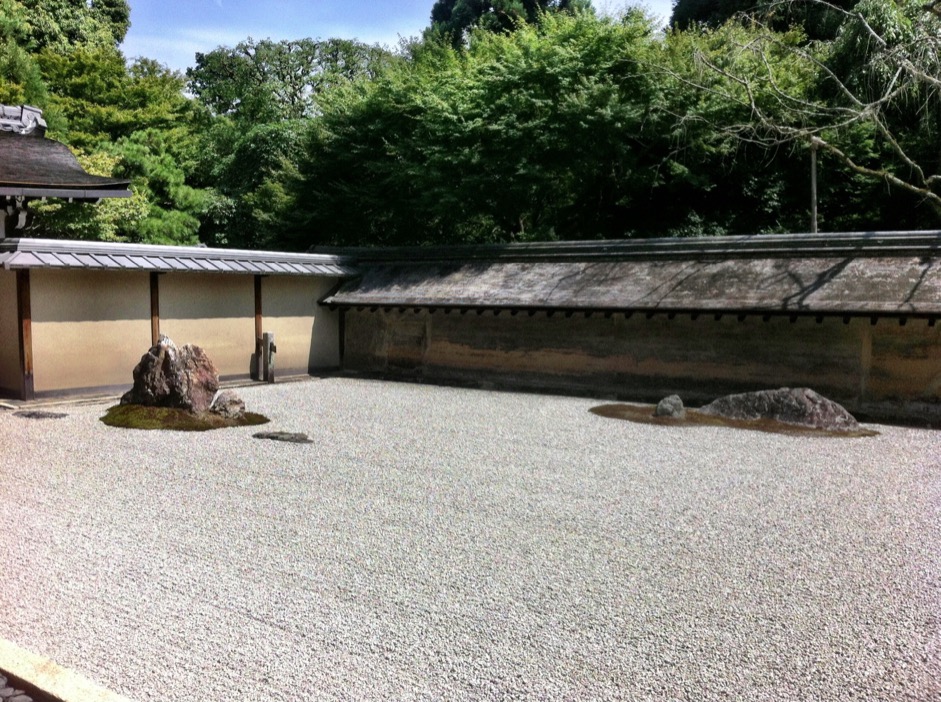
Loading...
Next, I turn my head to the left while sitting in the same viewpoint. There is again nothing in the center of my vision. The view is split. Nothing is emphasised.
Rightward
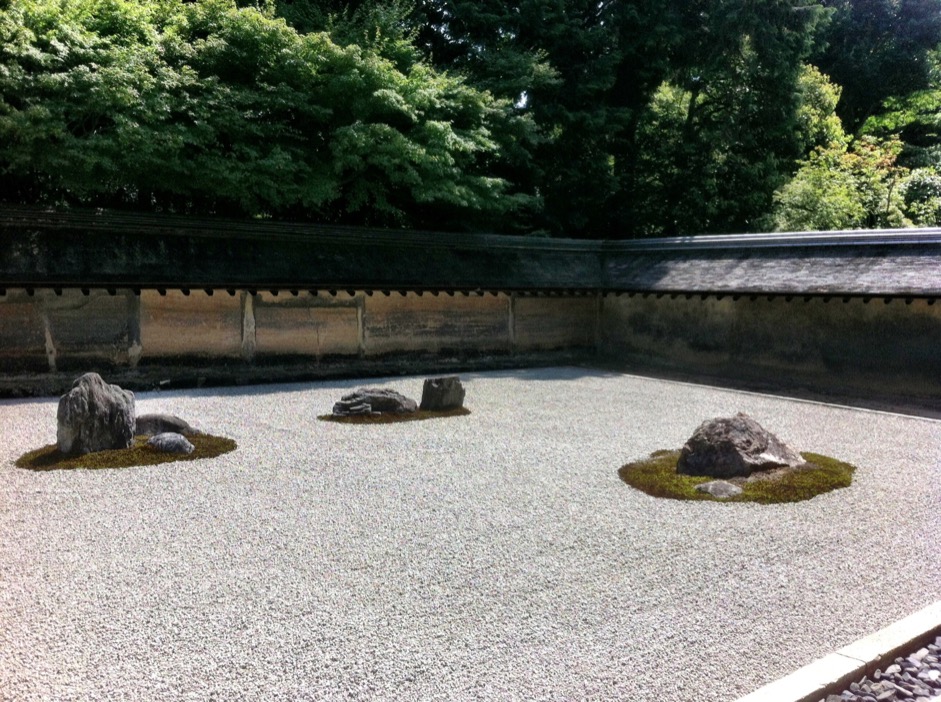
Loading...
Finally, I turn my head to the right while still staying at the same viewpoint. There are three groups of rocks, but none of them stand out clearly. Location in the middle usually casts the spotlight, but the two rocks in the middle group look rather modest and are located off the center. Nothing is stressed in this view, either.
No Single Rock Dominates
The lack of emphasis, I then notice, penetrates into how fifteen rocks are arranged into five clusters, each surrounded by a patch of moss. Let’s start looking at the middle three clusters.
Middle left
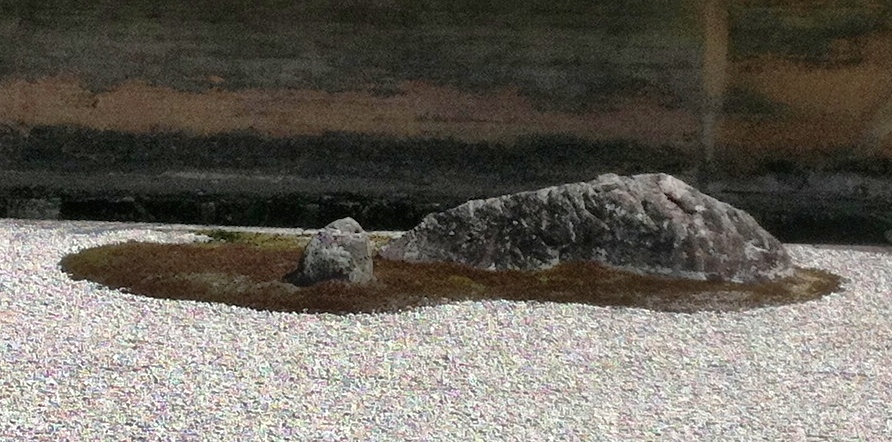
Loading...
The middle-left cluster consists of two rocks. There is no center. The right elongated one dominates, but it is located to the right side, not at the center.
Middle
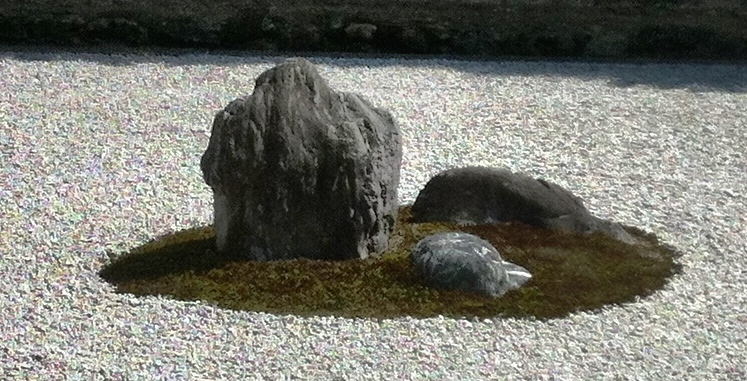
Loading...
The middle cluster consists of three rocks. One on the left dominates, but it is again not located at the center but to the side.
Middle right
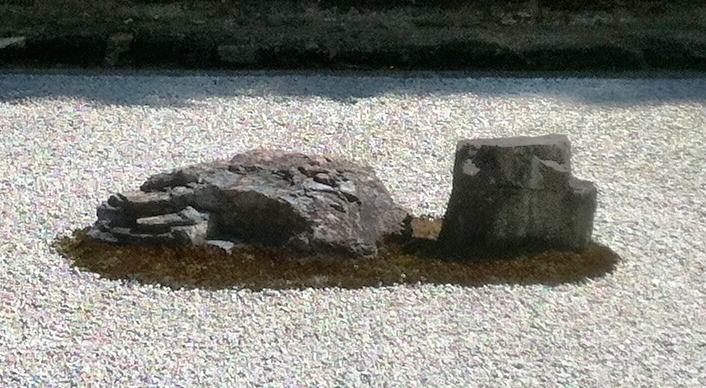
Loading...
The middle-right cluster consists of two rocks, each in a peculiar shape. But neither is emphasized more than the other.
Leftmost
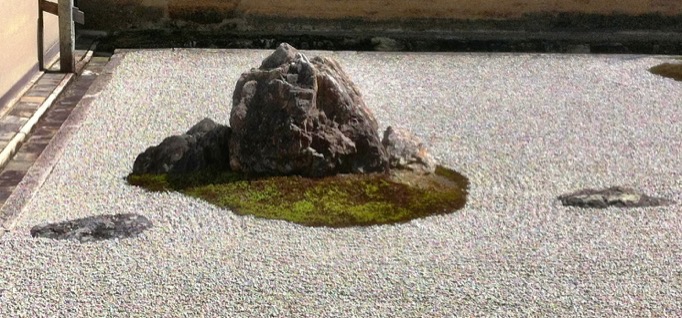
Loading...
The group of rocks furthest to the the left is the most magnificent composition in this garden if seen from the front of it. One large, well-shaped rock stands in the middle, flanked by two small standing rocks and two flat stones farther away. But the whole group is marginalized at the left edge of the garden, not at the center. When seen from the viewpoint, the symmetric composition is thus destroyed.
Rightmost
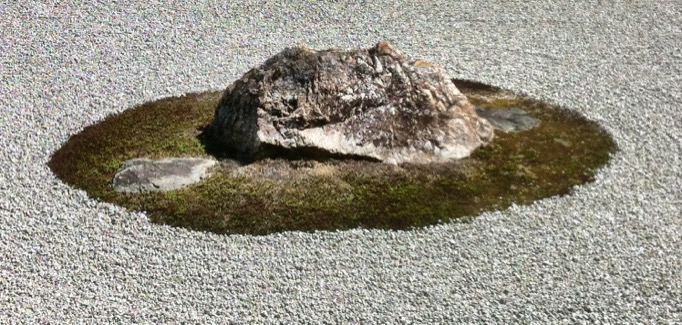
Loading...
The group of rocks furthest to the right is made of three rocks. One large lying stone is flanked by two flat stones. This symmetric composition, however, is also marginalized at the edge of the garden, not in the center. The right flat stone even disappears from sight when seen from the viewpoint, as it hides behind the large rock.
The Rock Garden’s Message
Now it is clear that nothing is emphasized throughout this garden. I start wondering why. The designer of this garden, who remains anonymous despite many attempts of historians to identify, must have had a purpose. What message did he or she try to convey to the visitors of this garden?
I remember that each rock in a zen garden is often interpreted as an unfulfilled desire in our mind. Once I see the rocks in Ryoan-ji Rock Garden as my own unfulfilled desires, the walled rectangular garden space begins to look like a metaphor of my inner self.
No emphasis on any of the fifteen rocks, I conclude, can therefore be interpreted as the following message:
Don’t fixate on one particular thing in our mind.
This idea is central to the preaching of Zen Buddhism to live a happy life. Don’t keep regretting what you’ve done in the past. Don’t always be worried about your uncertain future. Nothing should be at the center of your mind, just like the arrangement of these fifteen rocks within the walled rectangular plot.
Garden as a Reminder
Ever since I managed to interpret the meaning of Ryoan-ji Rock Garden as described above, I’ve been paying a visit to this zen garden whenever I get too much preoccupied with my unfulfilled desires.
The best way to appreciate the garden is to arrive early in the morning before tourists start flocking to Ryoan-ji Temple. I arrive there when the temple opens its gate at 8am (or at 8:30am from December to February). I sit down at the viewpoint explained above. Then I observe how the rising sun constantly changes its way of illuminating the garden as the time passes by—no fixation on a particular moment.
By 10am, a flock of tourists start arriving and counting how many rocks there are—which is totally off the point about this garden. I leave the rock garden and take a stroll around the pond garden outside, which I realize also avoids creating any focal point.
With the 21st century’s life overloaded with information, it is so easy to forget the simple principle of happiness that the Buddha discovered in the 5th century BC. With its minimal, yet profound composition of 15 rocks, Ryoan-ji Rock Garden has been there since the early 16th century to remind us of the teaching of the Buddha.